We recently connected with Sarah Schira and have shared our conversation below.
Sarah, thanks for joining us, excited to have you contributing your stories and insights. What’s been the most meaningful project you’ve worked on?
I think it has to be the mystery gnome I did during December 2020. It was the first gnome knitalong in which I did a daily email and incorporated a storybook and recipes as well as the usual knitting instructions for the gnome. It was lockdown Christmas, and having that little bundle of whimsy to send out into the world every day helped me get out of bed. And I heard from so many knitters that waiting to see what came next and chatting with people in the knitalong forum really saved that month for them. Ever since then, I look at the emails I send out in a different light.
While so much of what drew me to knitting was the warmth and style it provides, knitting playfully has turned out to be the real gift. When we create something with “no purpose”, we are playing. Why do we make things into work, make them about productivity or create rules, even in our hobbies?
I’ve heard so many people say, “I can’t buy yarn until I use up this the balls in this cupboard”, or “I can’t start something new until I’ve finished this project”. Don’t get me wrong, I’m feeling those same urges, thinking those same thoughts. I haven’t managed to unlearn those scripts myself.
But play is meaning. It has no other purpose than to be what we need from it. I’d encourage everyone to – at least occasionally – make something for no reason. With no functionality in mind.
I think meaning often comes after the fact, as we sit with the memories of the event, the project, the relationship. Can we set out to “make meaning”? Or can we only set out to look for meaning?
I’m not sure I know the answer, but I do know that in my life, spontaneity and purposelessness have often lead me to the best things, the best people, the best memories.
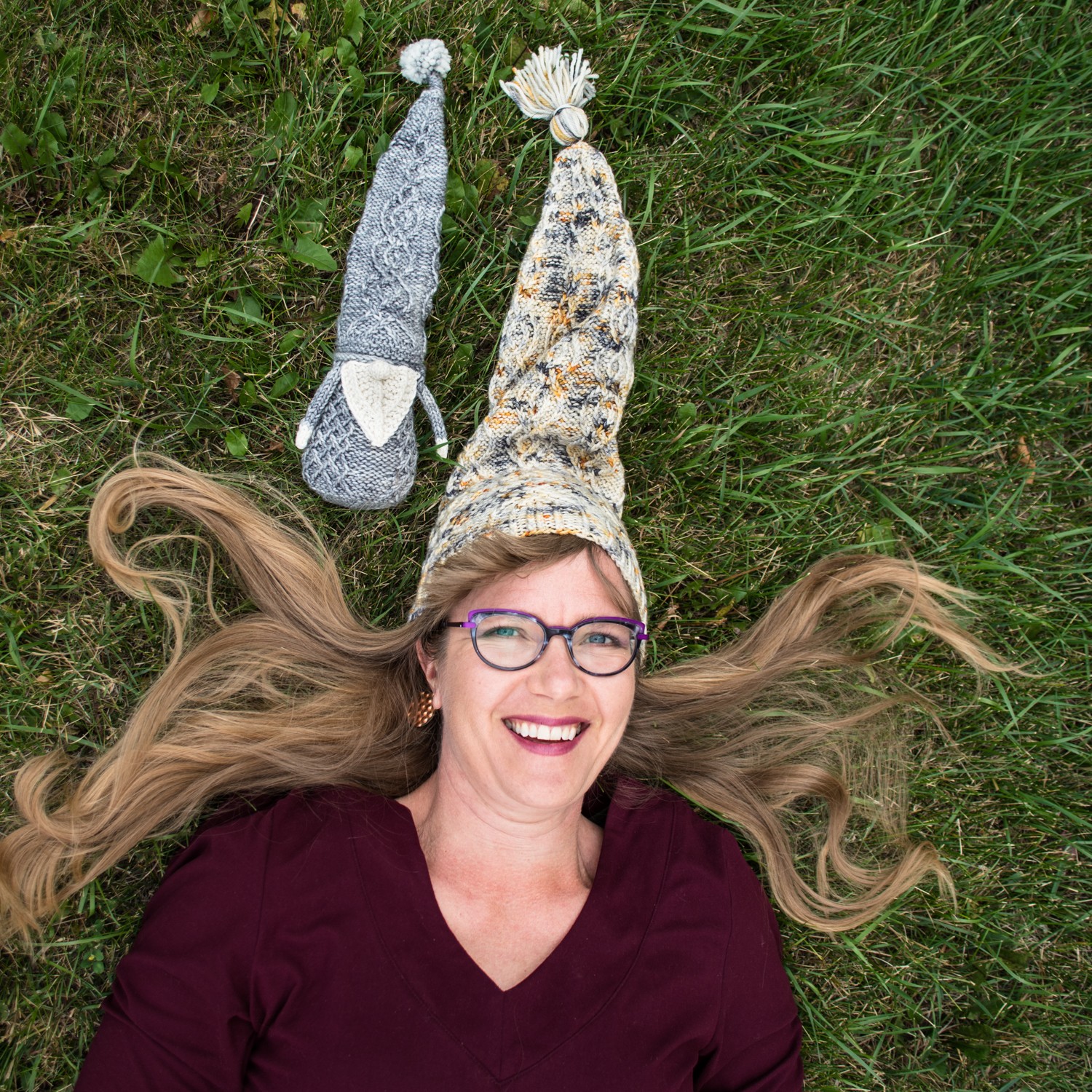
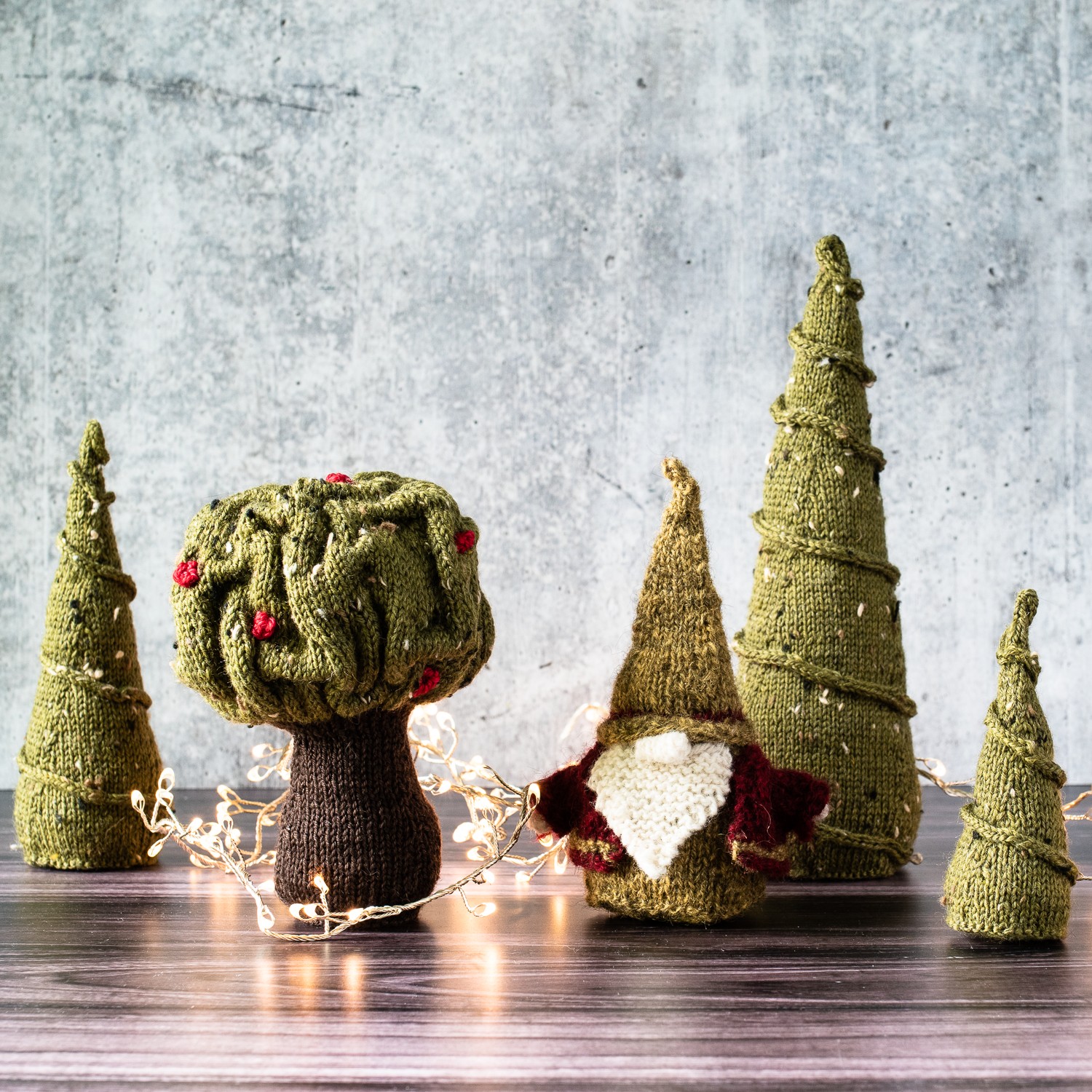
Great, appreciate you sharing that with us. Before we ask you to share more of your insights, can you take a moment to introduce yourself and how you got to where you are today to our readers.
I learned to knit multiple times – from both grandmothers, from my mother, from Brownies, and finally from the library. Only the last one stuck. At that point in my life – a homeschooling mama – it seemed like everything in my life was cyclical (feed the kids, kids are hungry again; water the garden, the garden is dry again) or intangible (teach them reading, teach them compassion). When I found knitting, it was tangible and it stayed done! I could hold it up in the air and say, “I did this.”
I started improvising patterns and changing them almost right away. It was the early days of the internet, and the few patterns I could find online or in the library weren’t exciting. I was so lucky that the third book I read about knitting was “Stitch and Bitch Nation” by Debbie Stoller. She blithely explained how to swap yarns in and out, how to throw a cable into a hat, etc. It freed me up to see beyond the directions to the fundamentals.
When I started designing, I didn’t expect to become a toy designer. I expected to start with accessories and move into cabled sweaters. You know, like a ‘real, grown-up designer’. I published the first gnome pattern, Never Not Gnoming, more on a lark. I honestly expected about 12 people would be interested, and then I’d go back to knitting them endlessly on my own. I couldn’t have a business based on joy and whimsy, could I?
But it turns out that gnomes are ideal projects for a lot of us – to play with our yarns, play with our colours, play with new knitting techniques. And it also turns out that people will let me teach them almost anything in the form of a gnome. They might not knit a sweater or a hat with a new technique, but they’re sure willing to let me tempt them into it for a gnome. Gnomes aren’t just quick and small, they’re judgement-free.
I keep saying over and over to folks as they worry about getting things right, “Wonkiness is gnominess.” But I also provide extensive video tutorial support. Judgement-free, but also totally supported – that’s what I want my projects to feel like for knitters.
Right now, my business is largely based on mystery patterns. That’s where you buy the pattern only knowing a few key things (like how many colours you’ll need, what basics skills we’ll be using) but the final shape of what we are making reveals itself as I send out each step. I think the community that builds up around this process has been the best part of my business. Thousands of knitters speculating about what something might be hinting at, helping each other when they hit a road block, improvising something and sharing how they did it. The online discussion threads for these gnomes are some of the kindest, funniest, cleverest, most creative places I’ve been online.
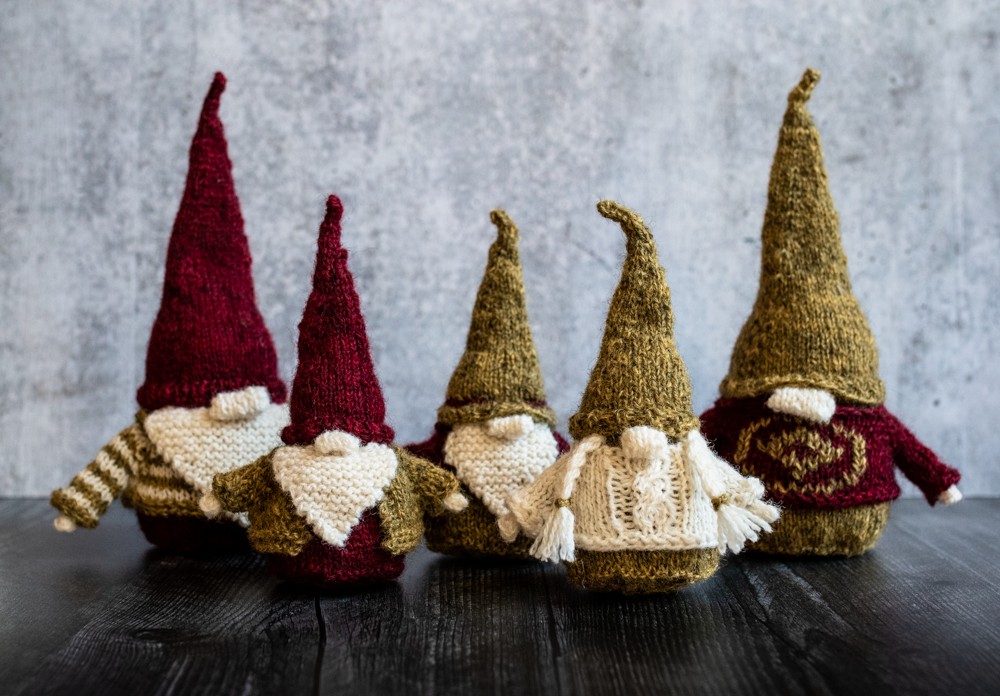

Any insights you can share with us about how you built up your social media presence?
I was already using social media as a participant, and found the idea of pivoting to be a business online really intimidating.
I gave myself permission to set my social media mood as “wildly excited person who can’t stop knitting” rather than trying to separate myself from my brand. It meant if I had something to share that was from another designer, or another hobby even, it all added to the mood.
I’ve made participation a cornerstone of my approach. I participate in other knitalongs. I complement people on their projects unrelated to my own designs. I ask questions on their posts, in other forums, in my Instagram Lives. Asking invites others in. When someone shares something, they feel their expertise. It might be their expertise on their own life as they tell a funny story, but it’s still expertise. The more people feel their own cleverness, wisdom, resourcefulness around me, the happier I am.
Don’t blunt yourself. There are billions of people on this planet, but you’re the only one that can resonate the way you do. Why should someone spend their money and their time on your business? By being yourself, you’ll find the people that feel more like themselves around you. You’ll find the people and the story – and drawing those connections is what social media is all about. Keep it social.
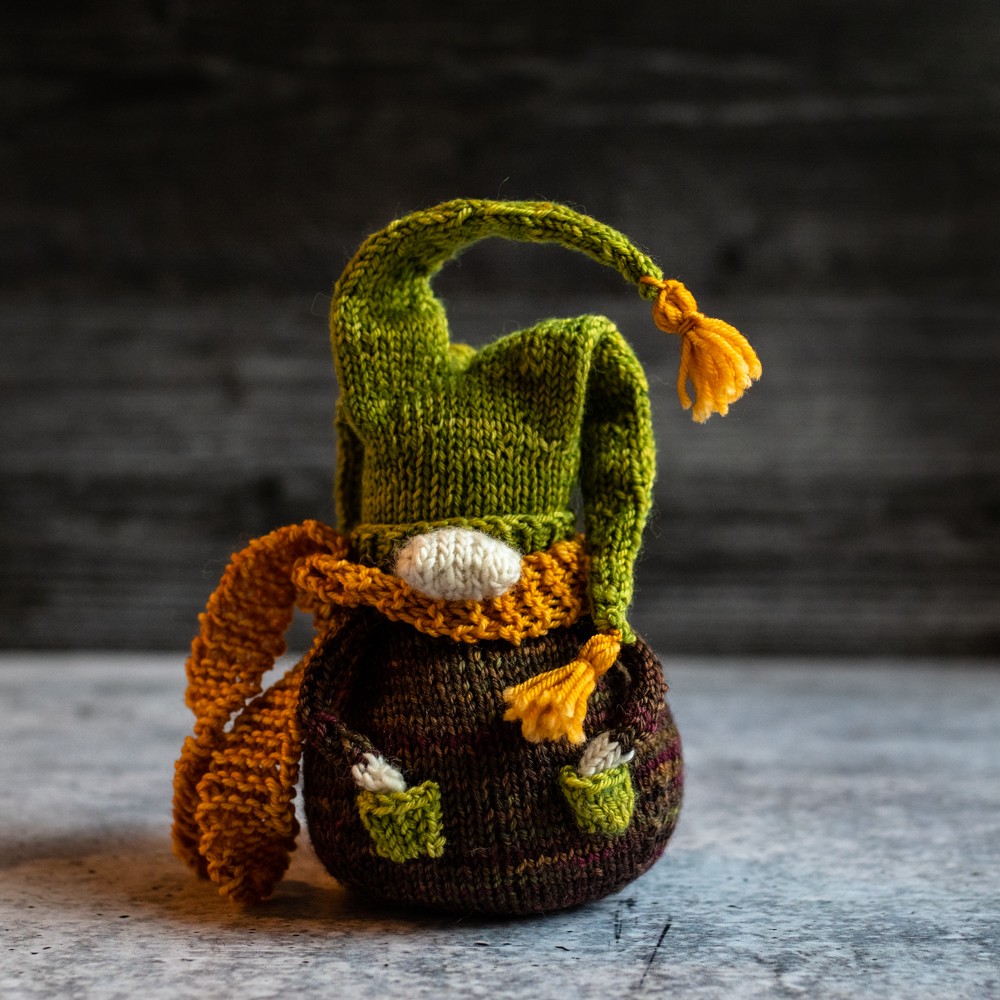

Is there something you think non-creatives will struggle to understand about your journey as a creative?
I think it’s hard to for people to trust the ebb and flow. It’s hard to believe that white space is part of creation – a lack of words, a quietness, a stillness. That the time between creating is part of the creativity.
I’m not made for generating the same amount of productivity every single day. I think creatives are like the ocean. We have tides. We ebb and then we flow. We have storms that change the coastline. Trusting that the ebb is just as vital is the flow can be hard. (Even for creatives.)
And for people outside, life off the conveyor belt often looks too messy to be trusted.
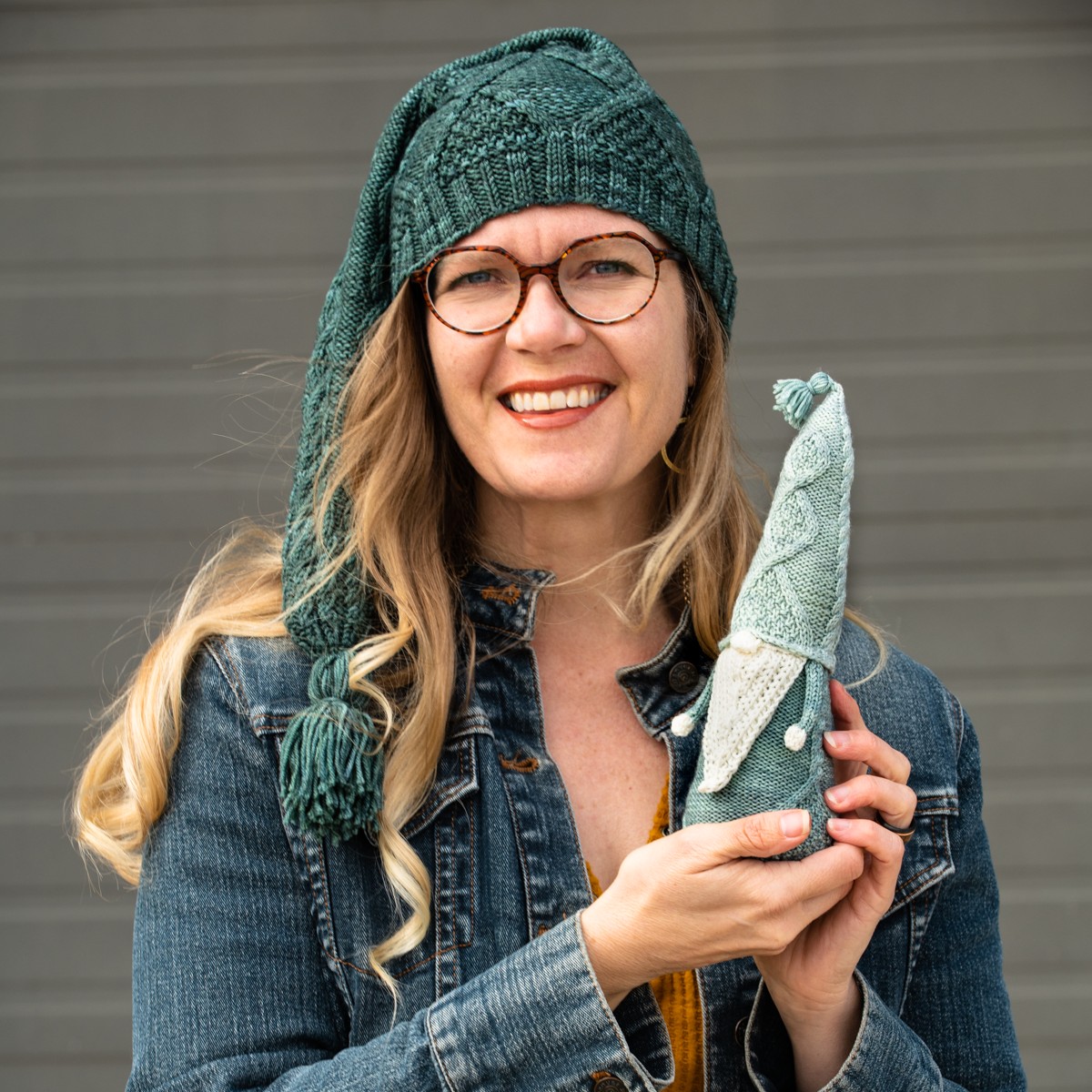
Contact Info:
- Website: https://www.imaginedlandscapes.com
- Instagram: https://www.instagram.com/imagined_landscapes/
- Youtube: https://www.youtube.com/channel/UCI0AlHmGQEIrLpu6UnwGhuw


